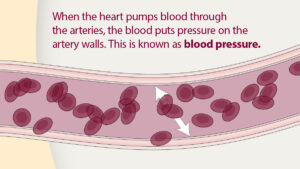Asthma
- Heterogeneous disease characterized by a combination of clinical manifestations along with reversible expiratory airflow limitation or bronchial hyper-responsiveness
- Affects about 18.8 million Americans
- Women are 62% more likely to have asthma than men
- Older adults may be undiagnosed
Risk factors and triggers
- Related to patient (e.g., genetic factors)
- Related to environment (e.g., pollen)
- Male gender is a risk factor in children (but not adults)
- Obesity is also a risk factor
- Genetics-inherited component is complex
- Immune response–hygiene hypothesis
- Allergens: May be seasonal or year-round depending on exposure to allergen
- Cockroaches, Furry animals, Fungi, Pollen, Molds
Trigger of Asthma attacks
- Exercise
- Exercise-induced asthma (EIA) or exercise-induced bronchospasm (EIB) is induced or exacerbated during physical exertion
- Occurs after vigorous exercise
- Pronounced with exposure to cold air
- Exercise-induced asthma (EIA) or exercise-induced bronchospasm (EIB) is induced or exacerbated during physical exertion
- Air pollutants
- Can trigger asthma attacks
- Cigarette or wood smoke
- Vehicle exhaust
- Concentrated pollution
- Aerosol sprays
- Oxidants
- Perfumes
- Sulfur dioxides
- Can trigger asthma attacks
- Respiratory infections
- Major precipitating factor of an acute asthma attack
- Increase Inflammation and hyper-responsiveness of tracheobronchial system
- Sinusitis, allergic rhinitis
- Viral upper respiratory tract infection
- Increase Inflammation and hyper-responsiveness of tracheobronchial system
- Major precipitating factor of an acute asthma attack
- Allergic rhinitis and nasal polyps
- Large polyps need to be removed
- Sinus problems are usually related to inflammation of the mucous membranes
-
- Animal dander (e.g., cats, mice, guinea pigs)
- Cockroaches
- House dust mite
- Molds
- Pollens
-
- Drugs and Food additives
- Asthma triad: Nasal polyps, asthma, and sensitivity to aspirin and NSAIDs
- Wheezing develops in about 2 hours.
- Sensitivity to salicylates
- Found in many foods, beverages, and flavorings
- β-Adrenergic blockers
- ACE inhibitors
- Food allergies may cause asthma symptoms
- Rare in adults
- Oral food challenges
- Beer, wine, dried fruit, shrimp,
- processed potatoes
- Monosodium glutamate
- Sulfites (bisulfites and metabisulfites)
- Tartrazine
- Asthma triad: Nasal polyps, asthma, and sensitivity to aspirin and NSAIDs
- Gastroesophageal reflux disease
- GERD more common in persons with asthma
- Reflux may trigger bronchoconstriction as well as cause aspiration
- Asthma medications may worsen GERD symptoms
- GERD more common in persons with asthma
- Emotional stress
- Psychologic factors can worsen the disease process
- Extreme emotional expressions
- Attacks can trigger panic and anxiety
- Psychologic factors can worsen the disease process




